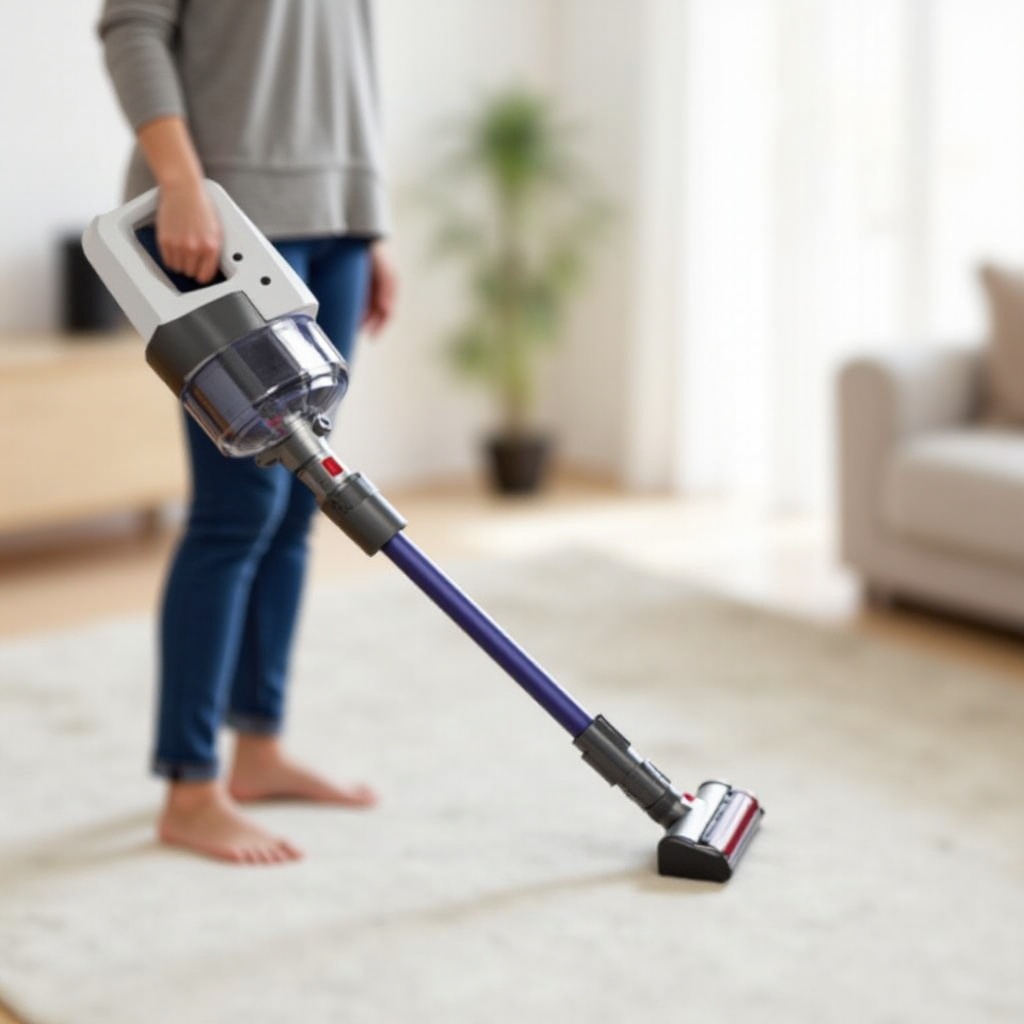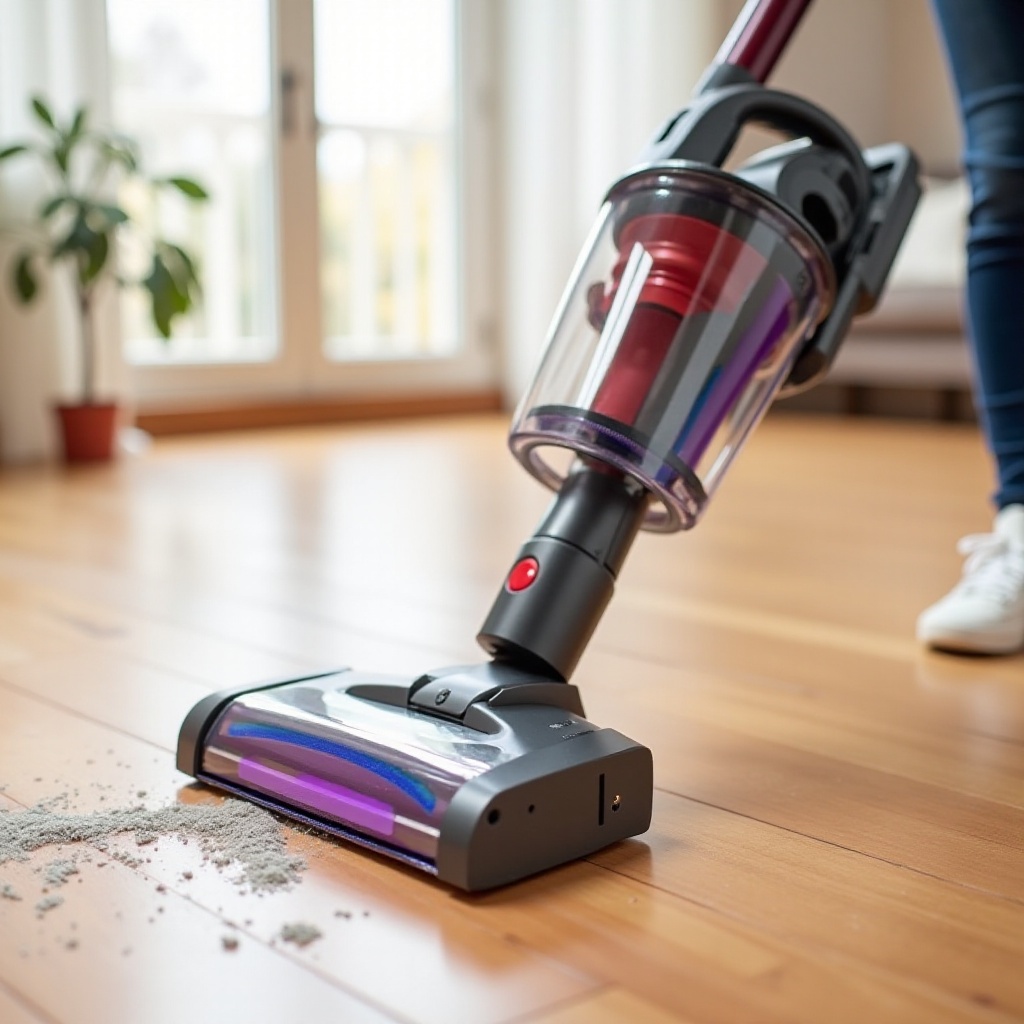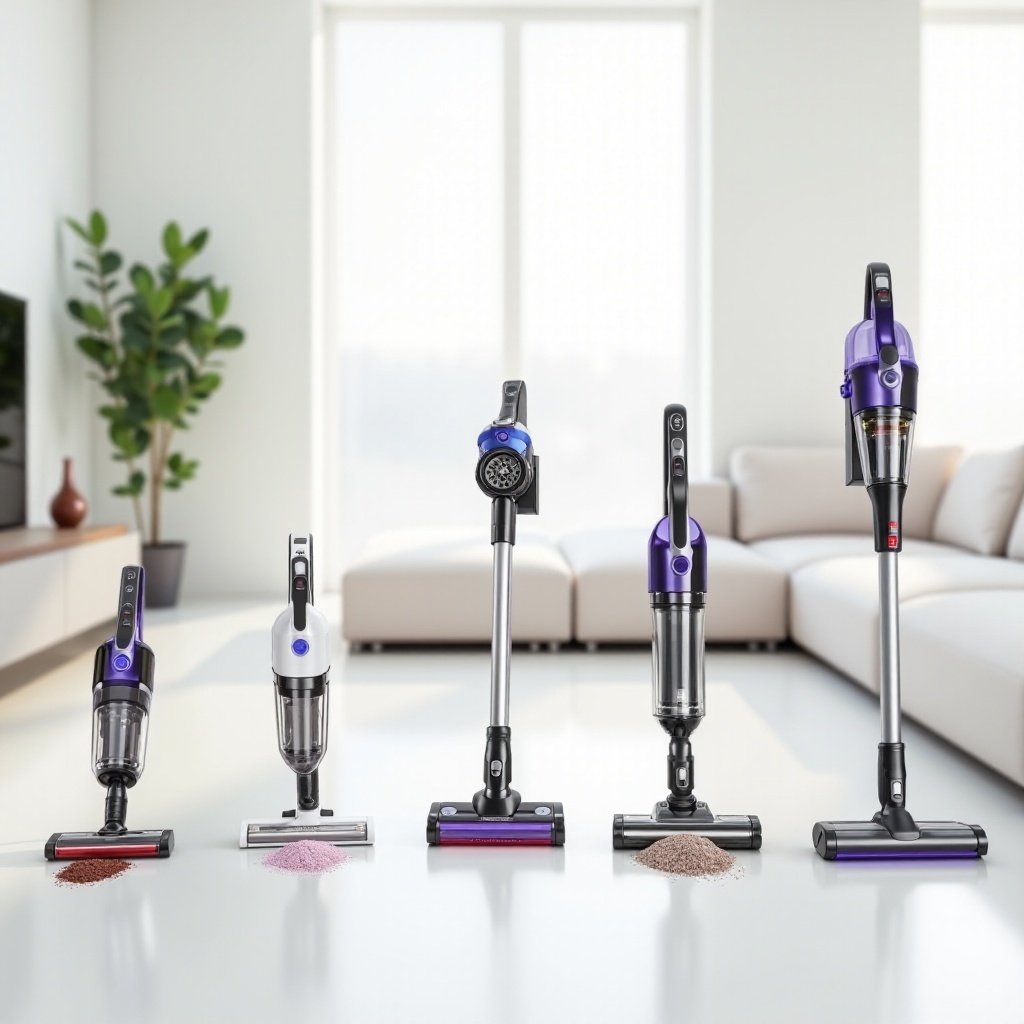Introduction
Choosing the right cordless vacuum cleaner can be daunting, especially with various models boasting different features. One of the most critical aspects to consider is suction power. Understanding its importance and determining what constitutes good suction power is crucial for effective cleaning. This blog will guide you through understanding suction power, its significance, ideal settings for various needs, and tips to maintain and enhance suction power in your cordless vacuum cleaner.

Understanding Suction Power
Suction power is commonly measured in Air Watts, which indicates the effectiveness of airflow and power consumption. A higher Air Watts value generally means better suction performance. However, other units, such as Pascal (Pa) or KPa, might be used to denote suction power. These metrics measure the vacuum’s ability to generate pressure to lift dust and debris.
Understanding these measurements helps in making informed decisions when purchasing a vacuum cleaner. It’s also worth noting that while higher suction power is advantageous, the design of the vacuum, including the motor and nozzle, plays a vital role in overall performance.

The Importance of Suction Power in Cordless Vacuums
Suction power in cordless vacuums directly impacts their cleaning efficiency. It defines how well the vacuum cleaner can pick up dirt, pet hair, and other debris from various surfaces. For homes with pets, powerful suction is essential to ensure the removal of pet hair embedded in carpets and upholstery.
Moreover, suction power affects the vacuum’s ability to deep-clean carpets and rugs, which trap microscopic dust particles. A vacuum with inadequate suction might leave behind dirt, reducing the cleanliness of your home. Consequently, ensuring your cordless vacuum has optimal suction power is critical for maintaining a healthy and hygienic living environment.
Ideal Suction Power for Different Cleaning Needs
Determining the best suction power depends on the specific cleaning tasks:
-
Hard Floors: For hard floors like tiles or hardwood, a vacuum cleaner with around 20-30 Air Watts of suction power is typically sufficient. This power level can effectively pick up dust and debris without scattering it.
-
Carpets and Rugs: Cleaning carpets and rugs require stronger suction, ideally between 100-200 Air Watts. Denser carpets might need suction on the higher end of this scale to remove deep-seated dirt and dust mites.
-
Pet Hair: Homes with pets need vacuums with at least 40 Air Watts on hard floors and over 100 Air Watts on carpets. This ensures the removal of pet hair and dander.
-
Upholstery and Curtains: These surfaces are delicate yet accumulate dust. Adjustable suction settings, ranging between 20-80 Air Watts, are beneficial for efficiently cleaning without damaging these materials.
Overall, the choice should align with the primary surfaces in your home and the specific cleaning challenges you face.
Comparing Top Cordless Vacuum Models by Suction Power
To better understand what constitutes good suction power, let’s compare popular cordless vacuum models:
-
Dyson V11 Torque Drive: Offers an impressive 185 Air Watts, making it suitable for all surface types, particularly efficient on carpets and for pet hair.
-
Shark IZ462H Vertex Ultra: With 180 Air Watts, this model excels at deep-cleaning carpets and handling stubborn pet hair.
-
Tineco A11 Hero EX: Provides around 120 Air Watts, adequate for everyday cleaning tasks on hard floors and low-pile carpets.
-
Hoover ONEPWR Blade+: Delivers 90 Air Watts, making it a balanced choice for homes with mixed flooring.
These comparisons highlight that while higher suction power generally indicates better performance, the overall design and additional features of the vacuum also significantly impact cleaning efficiency.

Factors That Affect Suction Power
Several factors can influence the suction power of cordless vacuums:
- Battery Life: Cordless vacuums rely on battery power, which can deplete quickly. Efficient battery management is crucial to maintain consistent suction power.
- Filtration System: Clogged filters can reduce suction power. Regular cleaning and maintenance are necessary for optimal performance.
- Design and Build Quality: The internal design, motor quality, and dirt disposal mechanism all play roles in the vacuum’s suction efficiency.
- Airflow Path: Obstructions within the vacuum’s path or tangled brush rolls can significantly impact the suction.
Being aware of these factors helps in choosing a vacuum that sustains consistent suction power throughout its use.
Enhancing and Maintaining Suction Power
Maintaining optimal suction power involves regular maintenance and proper usage:
-
Clean Filters Regularly: Dirty filters significantly reduce suction. Rinse and dry them as per the manufacturer’s instructions.
-
Empty Dustbin Frequently: Overfilled dustbins obstruct airflow, reducing suction efficiency.
-
Check for Blockages: Inspect the hose and brush roll for any blockages or debris build-up that might impede suction.
-
Battery Care: Ensure the battery is fully charged and avoid running it on low power frequently to maintain consistent suction levels.
By following these steps, you can ensure your vacuum maintains high suction power and performs efficiently.
Conclusion
Selecting a cordless vacuum cleaner with good suction power is critical for ensuring effective cleaning of your home. Understanding how suction power works, its significance, and its ideal levels for different cleaning needs can help you make an informed choice. Regular maintenance and attention to factors affecting suction power can prolong the efficiency and lifespan of your vacuum.
Frequently Asked Questions
What suction power is needed for pet hair?
For pet hair, a cordless vacuum requires at least 40 Air Watts on hard floors and over 100 Air Watts on carpets to effectively remove pet hair and dander.
How does battery life impact suction power in cordless vacuums?
Battery life directly influences suction power. As the battery depletes, the vacuum’s suction power can decrease. Efficient battery management and choosing models with longer battery life are essential for maintaining high suction power.
Can suction power be improved on a cordless vacuum cleaner?
Yes, suction power can be improved by regularly cleaning filters, emptying the dustbin, checking for blockages, and ensuring the battery is adequately charged. Regular maintenance is key to sustaining and enhancing suction power.
